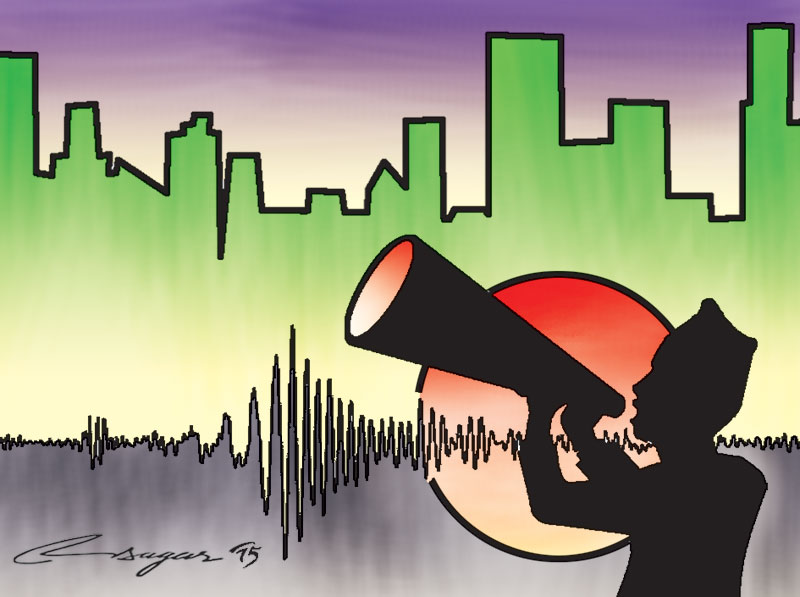Post-disaster reconstruction: Listen to the affected
For the rehabilitation and reconstruction drive to gain the required momentum without any further delay, it is imperative that the government pay due attention to make the authority financially transparent
The devastating earthquake of 7.9 magnitude that struck Nepal with its epicenter at Barpak VDC, Gorkha on 25 April 2015 and its frequent aftershocks have caused destruction of lives and properties in 14 districts (Gorkha, Rasuwa, Nuwakot, Dhading, Sindupalchok, Kavre, Dolakha, Okhaldhunga, Ramechhap, Makwanpur, Sindhuli, Kathmandu, Lalitpur and Bhaktapur).
Over 9,000 people (highest fatalities being 3,531 in Sindupalchok district alone) have been killed, thousands injured and hundreds of thousands of houses, public and private school buildings, many government and public office buildings, historical, cultural and archaeological heritages have been seriously damaged and many people including children rendered homeless.
The per capita disaster impact of the April 25 earthquake and its subsequent aftershocks was highest in the mountains and hilly districts. These districts suffered most extensively as a result of such disasters. Analysis of available data from the government sources shows that about 70 per cent of the total fatalities occurred in indigenous populations who have also experienced about the same percentage of destruction of their infrastructures. Several villages of the affected districts are no longer suitable for living due to landslides caused by the earthquakes.
All would agree that the reconstruction or rebuilding phase after the great earthquakes has given us an opportunity to remodel our developmental efforts and come up with context specific policies, plans and programs that would benefit the affected peoples. The government’s rehabilitation and reconstruction programs of the affected districts and the communities should therefore be able to protect the mountains, hills and other regions from future disaster risks. This means the government should not come up with a blanket approach while addressing the post- disaster reconstruction.
Second, creation of a new and independent post disaster national authority to manage the development, rehabilitation and reconstruction is important and desirable in a situation where it is unlikely that the existing government institutional mechanisms would not be able to implement a high volume of additional plans and projects at increased speed, while at the same time sustaining routine public services. This justifies entrusting one agency solely for the rehabilitation and reconstruction works that provide oversight, a single point of co-ordination and communication for both national and international stakeholders and additional capacity to implement and expedite development, rehabilitation and reconstruction projects. However, citizens doubt whether it will be able to work independently, efficiently and effectively given that it is being headed by the PM. Its independence and unbiased functioning further become questionable when its top executive is appointed by the political party quotas which sow doubts that we are moving towards the ‘business as usual model’and mixing politics with the reconstruction and development in this period of time.
Every effort should be made to make this body inclusive and wherever possible attention should be paid to involve the dedicated and qualified personalities from the affected districts and communities as well. It is because grassroots people as individuals and communities as a whole should be consulted and involved in post-disaster rehabilitation and reconstruction since ultimately the community and the individuals are responsible for their own safety and sustained development. If the national reconstruction authority could not function independently as per the wishes of the people, it will have repercussion on democratic order in the long run. Therefore, for the rehabilitation and reconstruction drive to gain the required momentum without any further delay, it is imperative that the government pay due attention to make the authority financially transparent, accountable, responsive and keep it away from the clutches of the corruption at all levels.
Third, rehabilitation and reconstruction solutions should be multi-disciplinary and there should be clear links between technological solutions and socio-cultural solutions. Also, we must remember that the houses and other infrastructures that are ill-adapted and built to local needs and lifestyles represent another disaster – sometime as dangerous as the original one.
The government must decide how to incorporate affected people and communities in the process of post-disaster rehabilitation and reconstruction initiatives. Post-disaster reconstruction focuses mainly on the physical aspect of the construction and socio-cultural aspects are often ignored. Consequently, the rehabilitation and reconstruction plans following major disasters focus mostly on the physical recovery and more visible impacts, and the plans often lack attention to socio-cultural recovery.
Local socio-cultural values and resources should also be incorporated into reconstruction and development efforts and for that to happen, the post disaster national reconstruction authority must listen to the affected families to ensure their participation in this collective action.
Dr. Tamang is a social scientist






